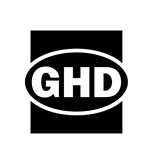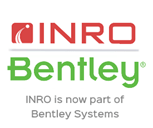Digital tool to prioritise station precinct improvements, and identify synergies for inter-government projects
Hugo Nilsson, Teresa Matassa & Tynan Schweitzer
AECOM, Western Australia
This presentation was delivered at the 2021 Online Conference Series and until October 2022 is only available to registered delegates and Content Access Pass holders via Interchange. For information on accessing this and other presentations please review the Content Access Pass options.
ABSTRACT
Using a novel natural language processing and text analysis approach, AECOM developed a prioritisation framework on behalf of the Public Transport Authority (PTA) to support decision making for programmes under the Rail Growth Plan strategy. Since 2016 the PTA has been developing Station Access Strategies with recommendations for each station precinct along the Perth rail network to improve ease, safety and attractiveness of first and last mile legs between stations, homes and destinations. The Station Access Improvement programme focuses on projects to support rail passenger growth, but also integrates with broader State Government objectives on accessibility, safety and the place-making ability of commuter stations and their surrounding precincts.
With consideration of individual station typologies and a focus on active modes, more than 1,800 recommendations (or'options') have been identified for state and local government agency delivery, to improve access and passenger growth in station precincts . The main challenge of the study was to develop a methodology able to consider the complexities in comparing over 1,800'options' across a broad range of measures. This was achieved through an automated text analysis approach considering word occurrences/groups, sentence structure and sentiment to formulate a'score' for each individual recommendation for defined criteria. A dashboard tool allows ongoing prioritisation assessments, applying different filters and criteria weightings to tailor each scenario to specific project, funding or investment decision making. The benefits of the tool extend beyond the PTA Rail Growth Plan as broader Government objectives, projects and priorities can be incorporated and the dashboard can be used to inform for inter-agency prioritisation discussions, and provide a tool to identify synergies and integrate the complex range and number of actions which influence place making.
Author(s)
Hugo Nilsson | AECOM
Hugo Nilsson has over three years of experience across a broad range of transport planning and modelling projects in the UK and Australia. His experience ranges from developing strategic transport models and matrix development to transport assessments.
Hugo has a strong numerical fluency and is a proficient programmer. As a transport modeller, his experience includes development and use of highway assignment models using a range of software. Hugo has additional experience in development and verification of demand models, choice modelling and development of bespoke transport models using Python. Hugo also has experience matrix development, including working with mobile phone data.
Hugo also has experience in tool development, including developing a cutting-edge tool for generation of synthetic matrices along with developing novel data collection and processing tools using various open-source data.
Teresa Matassa | AECOM
Teresa Matassa is the Group Lead for the WA Transport Infrastructure Advisory team and has over 17 years’ experience in strategic transport advice, project appraisals and design. Teresa is passionate about supporting government and industry to deliver strategies and strong design outcomes which contribute to sustainable growth of regions and communities, and support government policies on liveable, connected and resilient communities for the future.
Teresa comes from a multi-disciplinary background and this is reflected in her diverse range of transport experience, from active transport strategies and behaviour change programs, transit and multi-modal infrastructure design projects to business cases and strategic planning projects for major freight and transit precincts in Perth.
Tynan Schweitzer | AECOM
|
Tynan Schweitzer has more than three years’ experience in industry between engineering and analytics. His multidisciplinary background provides him with a wide pool of knowledge to draw on. Tynan is always keen to challenge himself with new works and deliver practical innovation. Tynan has experience in data science, particularly dashboarding, scripting and data analysis. He has worked with AECOM’s Advisory Teams to provide analytics on a range of transportation, resource and health projects. Tynan is a former chairperson of the Western Australian Young Professionals chapter of the Institution of Engineering and Technology, which enabled him to develop his project management and leadership skills. |









